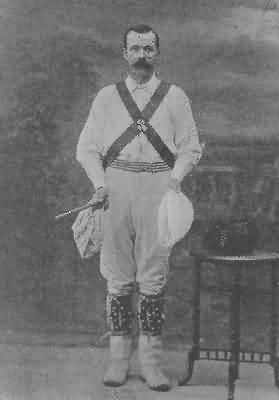Annotation:Greensleeves (1)
X: 1 T:Greensleeves, Longborough M:6/8 L:1/8 A:Longborough P:A(AB2)5 K:GMIX P:A A|B2A B2d|c2B A2A|B2B G2G |F2E D2A| B2A B2d|c2B A2A|B2G A2F |G3 G2 || P:B z|f2e f2d|c2B A3 |f2e f2e/f/|g2f d2e| f2e f2d|c2B A2A|B2G A2F |G3 G2 ||

Roy Dommett, writing in his article "Baccapipes"[2], notes that dancers could not always find musicians to accompany them, and formed the habit of sining simple rhymes to accompany their figures:
Greensleeves and yellow lace,
Get up you bitch and work a pace,
Your father lies in a hell of a place,
All for the want of money.
and,
Some say the devil's dead, the devil's dead, the devil's dead,
Some say the devil's dead and buried in Cold Harbour.
Some say he's up again, some say he's up again,
Some say he's up again, apprenticed to a barber.
"Greensleeves" is mentioned in a morris context by Alan Nowell in his article "Dance Traces Surviving in The Ritual of Freemasonry" (published in Archaeology Ireland, Spring 2010):
This mention of comedy is wholly relevant. If you look at a reconstruction of the dance on youtube.com (by searching "3 kick, wyresdale" [2]) you will hear a lot of laughter from the audience. This is initiated when the dancers start an arse-kicking sequence (in Wyresdale the hopping dance was simply known as "Greensleeves" and in a local fiddler's tune book from 1789 the tune Greensleeves is also titled "kick my A-E"). I have found this the hardest part of my investigation because comedy is so ephemeral and difficult to deal with in an ancient historical context. This repeated kicking chorus (found in a Wyresdale hopping dance, Northumberland) may have had a separate history. It occurs in the Ilmington Buffoon Cotswold Morris Dance and it seems to be related to Pimponpet which is listed as one of Gargantua's Games by Rabelais (c. 1494–1553). In Randle Cotgraves' English/French Dictionary published 1611 it is described as "A kind of game wherein three hit each other on the bumme with one of their feet". In 1653, Thomas Urquhart, translator of Rabelais, seems to have been familiar with Pimponpet and translates it as Bumdockdousse.

